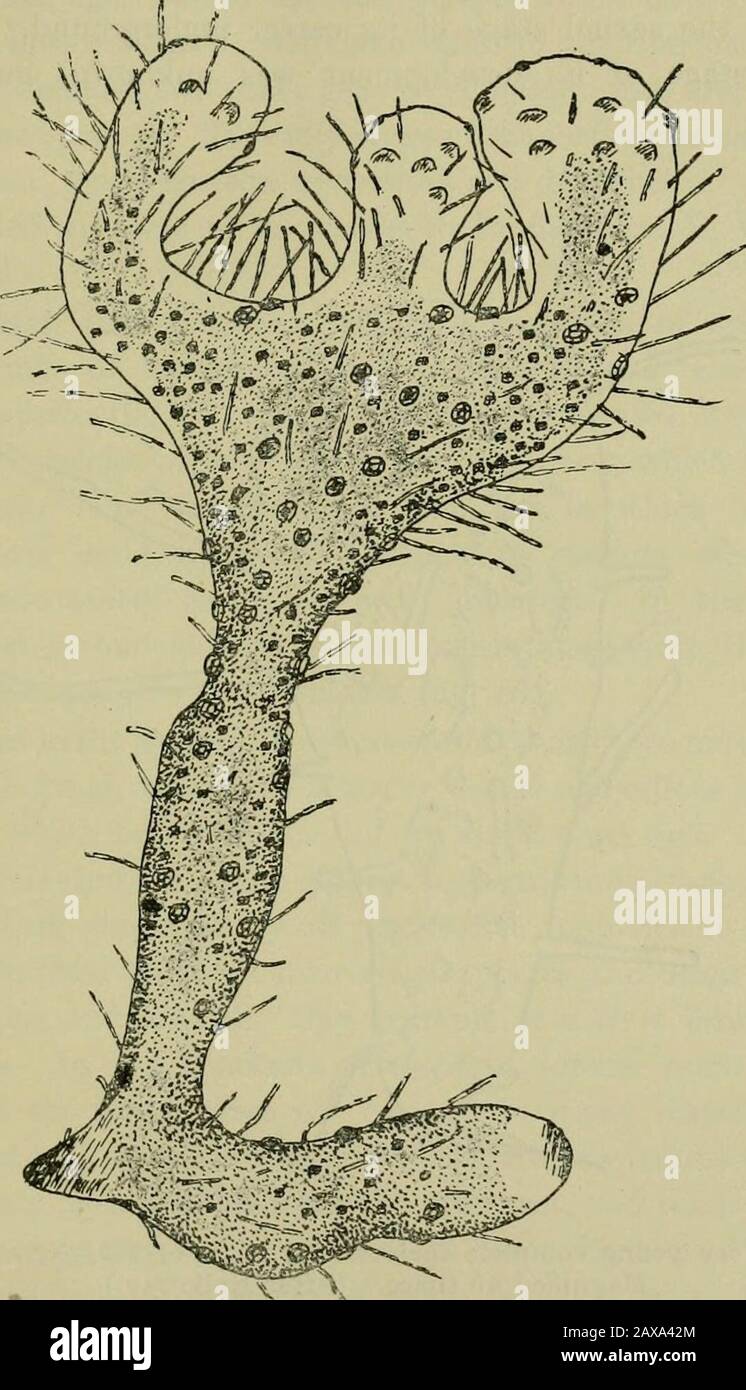New Zealand plants and their story . ichotnanes. The leaves of these ferns are generally muchdivided, but those of the kidney-fern {Trichomanes reniforme) havea quite even margin. Many ferns can live only in a moist atmo-sphere ; others, again, can tolerate extreme drought—e.g., the thick-leaved Cyclophorus serpens and the woolly Gymnogranime rutaefolia. The club-mosses (Lycopodiaceae) are represented by 11 species,one of which, L. ramulosum, is endemic. Although called club-mosses, they bear no relationship to mosses proper. Like theferns, these plants pass through a sexless (spore-bearing) s

Image details
Contributor:
The Reading Room / Alamy Stock PhotoImage ID:
2AXA42MFile size:
7.1 MB (339 KB Compressed download)Releases:
Model - no | Property - noDo I need a release?Dimensions:
1198 x 2086 px | 20.3 x 35.3 cm | 8 x 13.9 inches | 150dpiMore information:
This image is a public domain image, which means either that copyright has expired in the image or the copyright holder has waived their copyright. Alamy charges you a fee for access to the high resolution copy of the image.
This image could have imperfections as it’s either historical or reportage.
New Zealand plants and their story . ichotnanes. The leaves of these ferns are generally muchdivided, but those of the kidney-fern {Trichomanes reniforme) havea quite even margin. Many ferns can live only in a moist atmo-sphere ; others, again, can tolerate extreme drought—e.g., the thick-leaved Cyclophorus serpens and the woolly Gymnogranime rutaefolia. The club-mosses (Lycopodiaceae) are represented by 11 species, one of which, L. ramulosum, is endemic. Although called club-mosses, they bear no relationship to mosses proper. Like theferns, these plants pass through a sexless (spore-bearing) stage anda sexual stage. The latter does not consist of a flat body whichlives on the ground, &c., as in the ferns, but of tiny tubers, whichhave to be dug out of the ground, in appearance something like THE SEXUAL STAGE OF CLUB-MOSSES. 175 badly shaped potatoes. Up to a few years ago very few club-mosses bad been found at this stage of development anywhere inthe world, so there remained much to be learnt of the life-history of. Complete branched early sexual stage of Tmesipteris of large size.Magnified 10 times. (After Holloway.) the genus. The honour of having filled this blank has come to NewZealand. The Rev. John E. Holloway, D.Sc, of Hokitika, duringthe last few years has dug up hundreds of our club-mosses at allstages of their sexual development, and in a series of brilliant papers 176 NEW ZEALAND PLANTS. published in the Transactions of the New Zealand Institute hasadded greatly to what was previously known concerning the life-history of Lycopodium. Tmesipteris, which closely resembles a club-moss in appearance, also passes the sexual stage of its career underground. Up to lastyear this stage of its development was unknown, but Professor